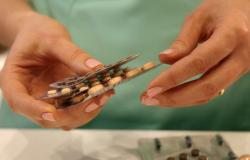Easter without eggs would be hard to imagine, as they are one of the main symbols of this holiday. They are placed on the holiday table, painted to win bright victories in Easter egg battles, rolled and used in other holiday traditions. “Balticovo”, as Northern Europe’s largest producer of eggs and egg products, has made sure that there are enough eggs for everyone on the holiday, and explains why eggshells have different colors and what the markings on them mean.
There will be enough eggs for everyone
The employees of “Balticovo” take care of about 3.5 million laying hens and young birds every day, and laying hens lay about 2.5 million eggs every day.
However, Easter is a time when the demand for eggs increases significantly – during the pre-holidays and holidays, it exceeds two, even three times the daily demand. It should be added here that it is not possible to “persuade” the chickens so that they arrive for the holiday season and start laying more eggs. Therefore, “Balticovo”, as the largest producer of eggs and egg products in Northern Europe, is careful
should be planned so that there are enough eggs for everyone during the holiday, because the company delivers them to the residents of Latvia and the Baltics, as well as to consumers in more than 20 other countries.
This holiday challenge is successfully overcome not only with careful planning, but also by ensuring the welfare of the birds, which allows us to successfully forecast the volume of egg production and guarantee that the people of Latvia will not lack eggs for the holidays.
White, brown and beige eggs – what’s the difference?
“Balticovo” hens provide us with brown and beige eggs. On the other hand, the issue of white eggs in Latvia becomes relevant only at Easter, therefore, in order to meet the demand for them, “Balticovo” imports them from safe egg producers and suppliers in the European Union.
The secret of the color of the eggshell must also be explained here – why one is white, the other is beige, and the third is brown. With a guarantee, the color of the eggs can be determined by the pigmentation of the hens’ ear lobes. It is 100% certain, but the color of the hens’ feathers tells a lot – white hens usually have white eggs, brown ones have brown eggs, and beige hens have beige eggs. It should be noted that in recent years “Balticovo” has kept beige chickens, so basically beige eggs are also available in stores.
However, the code that can be seen on each egg is essential, because it provides a lot of information about each egg – the country of origin of the egg, the home of the hen and its exact location.
What does the marking on eggs mean?
You can see the special markings on each egg sold in the store – they start with one number, continue with a letter code and end with a string of several numbers.
The first number denotes the method of keeping the particular egg-laying hen, and there are four of them:
- The number “0” means that the chicken was raised in organic conditions and eats organically certified feed,
- Number “1” – chicken kept in free conditions – it moves freely within the barn and goes outside,
- The number “2” – denotes a chicken kept in a barn, ie it can move freely within the barn,
- Number “3” – laying hens raised in cages.
Next comes the letter code, which is actually one of the most important parts of the label. If you see “LV” here, you can be sure that it is an egg laid in Latvia, and you can be sure of the quality of the egg. In stores in Latvia, you can also buy eggs on which you will find, for example, the following codes – “EE” or “LT”, which indicate that the eggs were produced in Estonia or Lithuania, respectively. The last string of numbers represents the identification number assigned to the company by the Food and Veterinary Service. This code helps to find out the exact location, if any, of the chicken
for reasons that need to be known later. And why is it important to know? Because it is important to be aware of what we eat! Know what you are eating, and more importantly – know whether you are putting a Latvian product on the table!
The welfare conditions of the chickens are improved
“Balticovo”, as Northern Europe’s largest producer of eggs and egg products, made a public commitment several years ago to improve the welfare of hens and end keeping them in cages. Every year, in its sustainability report, the company discloses progress to completely transform production by 2027, replacing cage housing with cage-free and free-range chicken housing.
Currently, more than 500,000 chickens are already in Iecava outside cages. In other “Balticovo” production plants, for example, 40,000 free-range chickens are working diligently in Vilce, 20,000 free-range chickens are working hard in Madona, and in Daugavpils, a little more than 40,000 free-range chickens are already freely grazing on an area of 16 hectares.
This year, “Balticovo” has approved the next round of investment in Iecava, where the construction of an additional 500,000 cage-free hens will soon begin. In total, in the last four years, “Balticovo” has invested more than 40 million euros for the transition to cage-free egg production.






